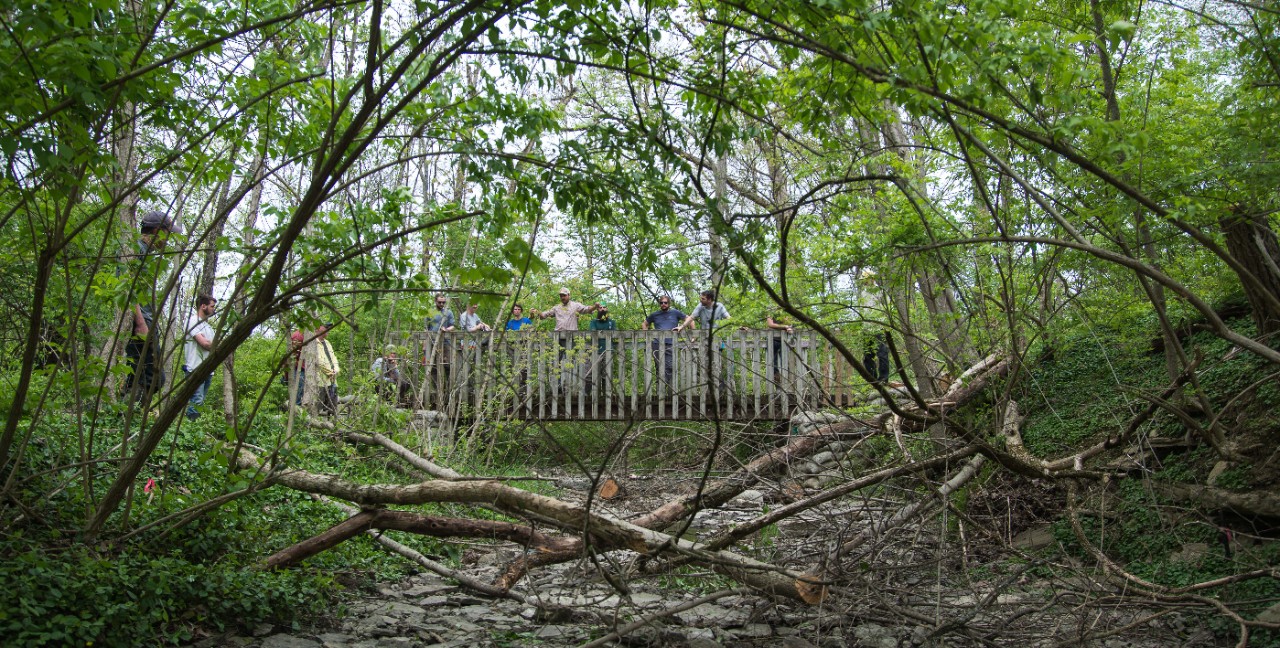
Spectrum News: Researchers place logs to protect Ohio's streams
UC biologists investigate low-cost ways to improve urban wildlife habitat
Spectrum News highlighted a demonstration project by biologists at the University of Cincinnati investigating low-cost ways to improve the health of urban streams.
UC biologists Michael Booth and Stephen Matter are working with the Hamilton County Conservation District on a pilot project to add heavy timber to Cooper Creek to create standing pools of water for fish and other aquatic life.

Adam Lehmann, stream conservation program manager for the Hamilton County Conservation District, oversees the pilot project. Photo/Michael Booth
The creek flows into Mill Creek and eventually the Ohio River. Biologists and a team of volunteers placed logs in strategic places to facilitate the creation of drought-resistant pools that can support wildlife in the hottest summer months. The logs also could help slow the flow of water during heavy storms, which can threaten to wash fish and other aquatic life far downstream.
Adam Lehmann, a stream specialist with the Hamilton County Conservation District, told Spectrum News that flood-mitigation efforts used streams to divert water quickly to the detriment of aquatic wildlife.
“The watershed is covered by 50% concrete and impervious surfaces, so when it rains it all just comes straight down here,” he said. “It’s a ubiquitous problem in urban and suburban areas.”
Researchers will study the creek over the next year to see if volunteers' hard work placing the logs was effective at creating aquatic habitat.
Watch the Spectrum News story.
Featured image at top: Volunteers help place heavy timber in Cooper Creek in places where the logs will not easily get washed downstream during storms. UC biologists will monitor the creek to see if the timber has the desired effect of creating wildlife habitat for fish and other aquatic life. Photo/Michael Booth

UC biology student Jayla Brown, left, and graduate student Peter Grap install transponders in timber to study how well it remains in place during periodic storms in the Cooper Creek. Photo/Michael Booth
Related Stories
News Cincinnati loved in 2025
January 2, 2026
The story of prohibition bootlegger George Remus was among WLWT's favorite segments in 2025. UC Law Professor Christopher Bryant spoke with journalist Lindsay Stone about Remus using a temporary insanity defense during a murder trial.
What to know about this year’s big tax changes
January 2, 2026
Local 12 reported that taxpayers can expect some major changes this tax season. Gary Friedhoff, adjunct instructor at the University of Cincinnati’s Carl H. Lindner College of Business, recently spoke to Local 12 about how to avoid surprises.
Study finds police officers face higher long-term health risks
January 2, 2026
J.C. Barnes, a University of Cincinnati professor, is interviewed by Spectrum News about new research showing that the physical and psychological demands of law enforcement can contribute to earlier deaths.
